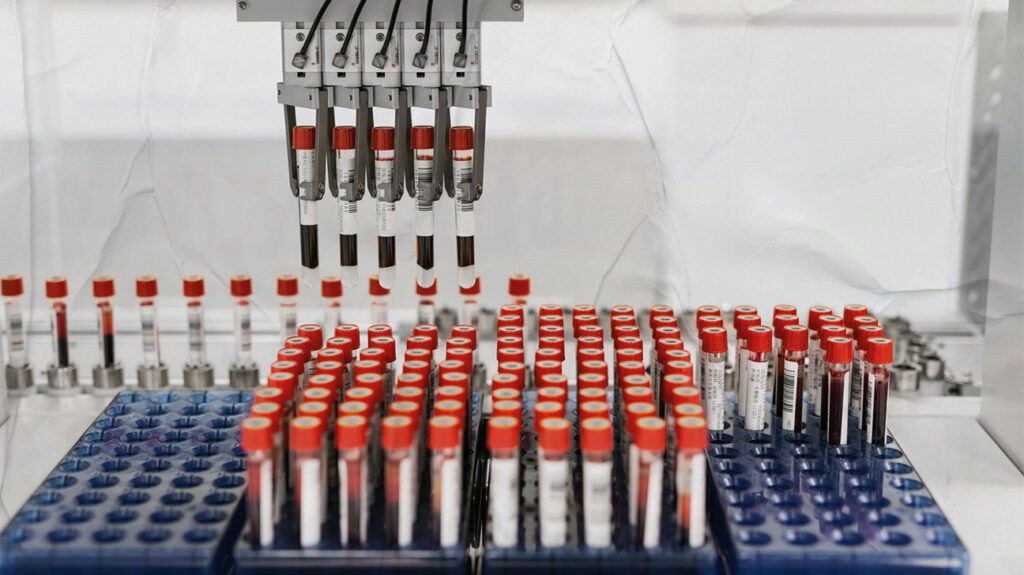Hepatitis B is a viral infection that impacts the liver. To test for hepatitis B, a doctor can perform a blood test that detects hepatitis B surface antigens. A positive result indicates a hepatitis B infection.
Hepatitis B is a type of viral hepatitis. It occurs due to an infection with the hepatitis B virus (HBV). An HBV infection causes liver inflammation that can lead to serious health complications.
A healthcare professional can perform a blood test to check for an HBV infection. One of these tests checks for the presence of hepatitis B surface antigens (HBsAg). This refers to proteins present on the surface of the HBV. A positive result for HBsAg indicates the virus is present and a person has an HBV infection.

Hepatitis B is a viral infection of the liver that occurs due to the hepatitis B virus (HBV). Similar to other viruses, the HBV features antigens on its surface. Antigens refer to molecular structures on the virus the immune system can use to identify the virus.
As such, people can perform an antigen test to test for the presence of HBVs, which indicates an HBV infection. Health experts will
An HBsAg test is the primary test for an acute or active HBV infection. Acute hepatitis B refers to a short-term illness that occurs within the first
HBsAg first appear roughly
However, HBsAg can also be present with chronic hepatitis B. This describes a lifelong infection with HBV that
As such, a positive HBsAg test indicates a person has an HBV infection.
The test for hepatitis B is known as a three-part hepatitis B panel. It is a blood test that only requires one sample. The “three” in the name refers to the three different biomarkers the test checks for. HBsAg are one of the substances this test looks for.
A healthcare professional will use a needle and syringe to draw a blood sample. This sample will then go to a laboratory, where technicians will test it and return the lab results. A doctor will interpret the results before recommending further action for an individual.
A positive test result for HBsAg indicates a person has an HBV infection. If a person receives a positive HBsAg result, they should contact a doctor for further evaluation.
The results from the other tests on the hepatitis B panel
If the HBsAg result is negative, the results of the other tests on the panel will suggest the necessary action. For example, if a person is negative for all of the tests, this indicates they are not immune to HBV and at risk for future infections. As such, they should receive a hepatitis B vaccine.
Other results from the panel may suggest a person is immune and cannot transmit HBV, or the results are inconclusive, and a person should repeat the panel test.
Different tests can detect a current or previous HBV infection. While the HBsAg test detects antigens of HBV, other tests look for other indicators of the virus. For example, they look for antibodies the body produces against an HBV or for viral DNA of an HBV.
As all of these tests require a blood sample, a doctor will test for all three parts to help fully understand whether a person has an HBV infection or not. They may refer to these three tests as a hepatitis B panel. In addition to an HBsAg test, the other two blood tests include:
Hepatitis B surface antibody test
Also known as an anti-HB, or HBsAb test, this test detects antibodies against HBV. A positive HBsAb test suggests a person has protection against HBV. This may be due to receiving an HBV vaccine or recovering from a previous HBV infection.
As such, a positive result indicates a person is immune to HBV. Therefore, they do not have an active infection and cannot transmit the virus to others.
Read on to learn more about HBsAb tests.
Hepatitis B core antibody test
Also known as an anti-HBc, or HBcAb test, this involves testing for active viral replication of an HBV. Unlike a positive HBsAb test, a positive HBcAb result does not protect against HBV.
To fully understand the result of an HBcAb test, a person will require the results of both the HBsAg and HBsAb tests. For example, if a person is positive for both HBsAg and HBcAb, these results suggest a person can have an acute or chronic HBV infection. However, if both HBcAb and HBsAb tests are positive, these results suggest a person recovered from a prior HBV infection and has natural protection from HBV.
If a doctor suspects an acute HBV infection, they may
Hepatitis B is a viral infection that can lead to serious liver problems. To identify if a person has a hepatitis B viral infection, a healthcare provider can perform a blood panel test.
As part of this test, a laboratory technician will check a blood sample for hepatitis B surface antigens. These refer to proteins present on the hepatitis B virus. If a person has a positive result for hepatitis B surface antigens, it indicates they have a hepatitis B viral infection.
